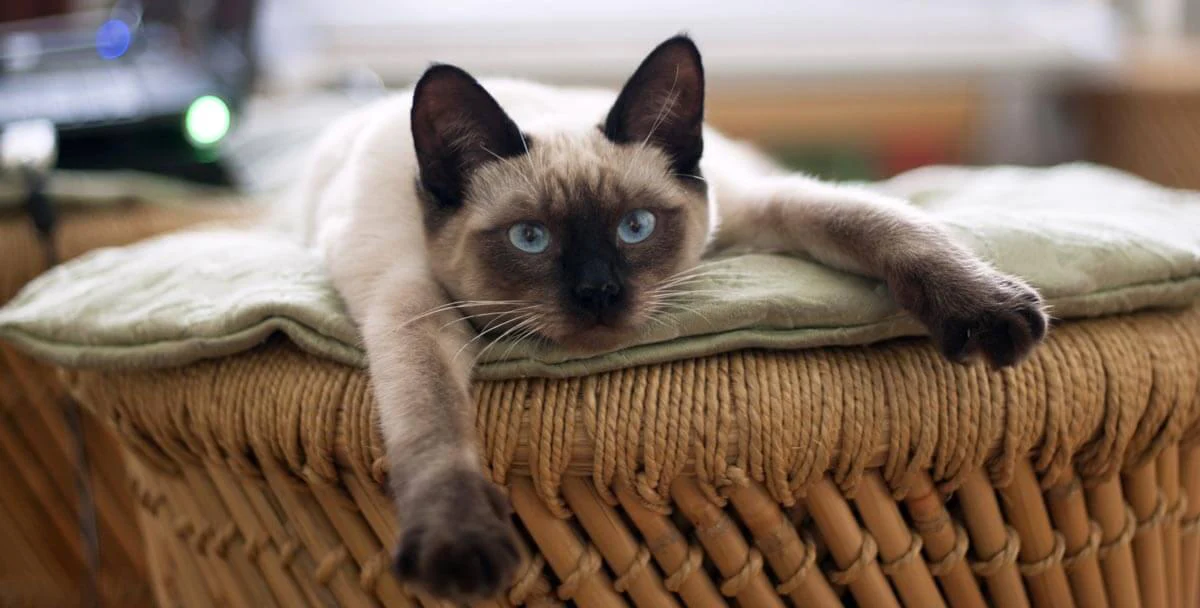Introduction :
Cats are mysterious creatures, known for their independent nature and unique personalities. If you’re considering adding a furry friend to your indoor space, you might be wondering which cat breeds are best suited for apartment or house living. From playful and affectionate to calm and low-maintenance, there’s a perfect feline companion for every indoor environment. Let’s explore the top 10 cat breeds that thrive in indoor settings.
Siamese Cats: The Social Butterflies
Siamese cats are renowned for their striking blue almond-shaped eyes and sleek, slender bodies. These sociable cats crave human companionship and thrive in environments where they receive plenty of attention. With their chatty nature and love for playtime, Siamese cats are ideal for households with active lifestyles.
Maine Coon Cats: Gentle Giants of the Indoor World
Maine Coon cats are known as the gentle giants of the feline world. With their large size and fluffy coats, they exude an air of majesty and grace. Despite their impressive stature, Maine Coons are affectionate and sociable cats that form strong bonds with their human companions. Their laid-back demeanor makes them well-suited for indoor living, where they can lounge around in comfort.
Ragdoll Cats: Your Loyal Lap Companion
Ragdoll cats are famous for their docile nature and tendency to go limp when picked up, earning them their name. These gentle giants are extremely affectionate and enjoy spending quality time with their owners. Ragdolls thrive in indoor environments where they can curl up in their favorite spot and enjoy the company of their human family members.
Scottish Fold Cats: The Quirky Charmers
With their distinctive folded ears and wide-eyed expressions, Scottish Fold cats have an undeniable charm. These playful and affectionate cats form strong bonds with their owners and enjoy being involved in household activities. Their adaptable nature makes them well-suited for indoor living, where they can entertain themselves with toys and interactive games.
British Shorthair Cats: The Classic Companions
British Shorthair cats are known for their round faces, dense coats, and sturdy build. These laid-back and easygoing cats are content to lounge around the house, making them perfect for indoor living. British Shorthairs form strong bonds with their owners and enjoy being part of the family dynamic.
Persian Cats: The Regal Beauties
Persian cats are renowned for their luxurious long fur and sweet personalities. These regal beauties enjoy a life of leisure indoors, where they can relax in comfort and style. Persian cats are affectionate and gentle companions that thrive in calm and peaceful environments.
Bengal Cats: The Energetic Explorers
Bengal cats are known for their striking leopard-like spots and energetic personalities. These curious and playful cats love to explore their surroundings and engage in interactive play. While Bengal cats have a high energy level, they can adapt well to indoor living with plenty of mental and physical stimulation.
Sphynx Cats: The Unconventional Companions
Sphynx cats are easily recognizable by their hairless bodies and wrinkled skin. Despite their unique appearance, Sphynx cats are affectionate, outgoing, and love to be the center of attention. These quirky companions thrive in indoor environments where they can soak up the warmth and affection of their human family members.
Burmese Cats: The Affectionate Allies
Burmese cats are known for their expressive eyes and affectionate nature. These social and people-oriented cats form strong bonds with their owners and enjoy being part of the household. Burmese cats are adaptable and thrive in indoor environments where they can receive plenty of love and attention.
Russian Blue Cats: The Elegant Enigmas
Russian Blue cats are known for their striking blue-gray coats and green eyes. These elegant and reserved cats are affectionate yet independent, making them well-suited for indoor living. Russian Blues appreciate having their own space to retreat to when they need some alone time but also enjoy being near their human companions.
Conclusion
Choosing the right cat breed for indoor living is an important decision that should be based on your lifestyle, preferences, and living environment. Whether you prefer a playful and energetic companion or a laid-back lap cat, there’s a perfect feline friend out there for you. By considering factors such as temperament, grooming needs, and activity level, you can find the ideal cat breed to enrich your indoor space with love and companionship.
FAQs:
- Are indoor cats happier than outdoor cats? Indoor cats can live happy and fulfilling lives as long as they receive plenty of mental and physical stimulation. Providing enriching activities, interactive toys, and opportunities for play can help indoor cats thrive.
- Do indoor cats need special grooming? Indoor cats may require regular grooming to maintain their coat health and prevent matting. Brushing their fur, trimming their nails, and cleaning their ears and teeth can help keep indoor cats healthy and happy.
- How can I keep my indoor cat entertained? Providing a variety of toys, scratching posts, and climbing structures can help keep indoor cats entertained and mentally stimulated. Engaging in interactive play sessions and rotating toys regularly can prevent boredom and keep your cat active.
- Do indoor cats need regular vet check-ups? Yes, indoor cats should receive regular vet check-ups to monitor their overall health and well-being. Vaccinations, parasite prevention, and dental care are important aspects of maintaining your indoor cat’s health.
- Can indoor cats go outside occasionally? Some indoor cats may enjoy supervised outdoor outings in a safe and controlled environment, such as a secure backyard or enclosed patio. However, it’s essential to ensure your cat is wearing a harness and leash and is closely supervised to prevent accidents or injuries.
